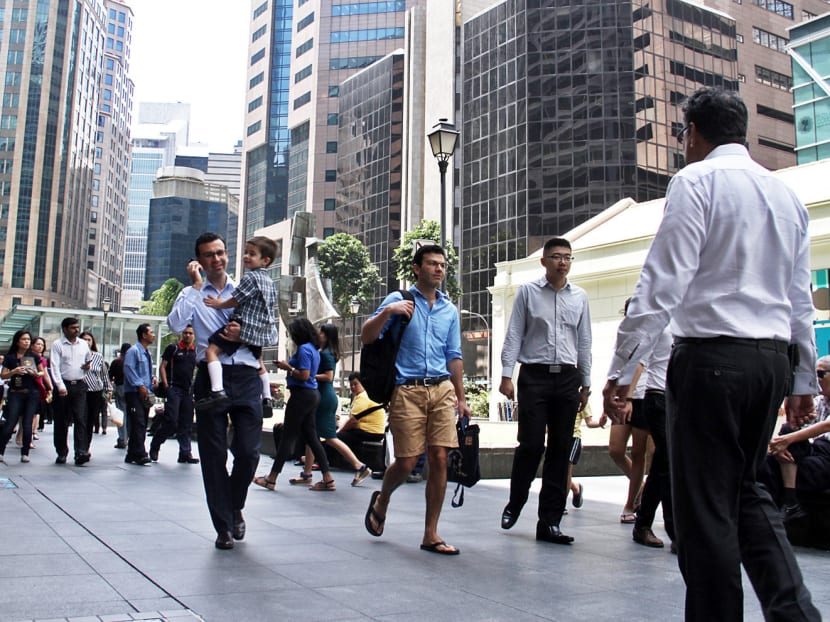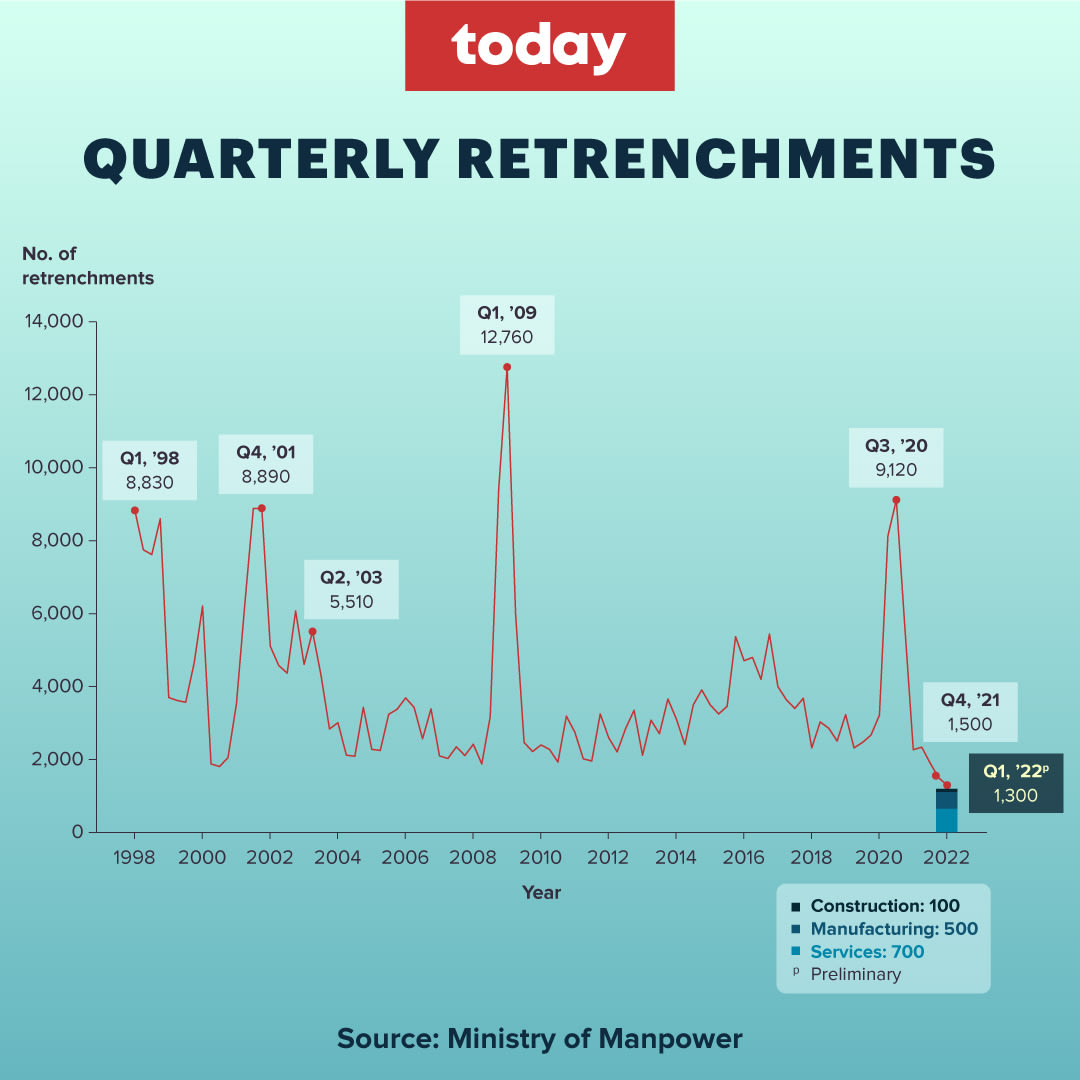Record low retrenchments, continued total employment growth in Q1 as economic recovery drives hiring demand
SINGAPORE — Retrenchments fell to a record low in the first quarter of this year, while total employment continued to grow on the back of strong non-resident hiring, advance estimates from the Ministry of Manpower (MOM) on Thursday (April 28) showed.

- Retrenchments fell to a record low of 1,300 for the first quarter of 2022 amid a tight labour market
- Total employment, excluding migrant domestic workers, grew by 41,100 on the back of strong hiring of work permit holders in the construction sector
- Unemployment remained unchanged from the previous quarter at 3 per cent for residents and 3.2 per cent for citizens
- The Ministry of Manpower said it expects the resident unemployment rate to stay low and resident employment to continue to grow modestly
- However, it flagged downside risks arising from the Russia-Ukraine war, the ongoing Covid-19 pandemic and monetary policy tightening in advanced economies
SINGAPORE — Retrenchments fell to a record low in the first quarter of this year, while total employment continued to grow on the back of strong non-resident hiring, advance estimates from the Ministry of Manpower (MOM) on Thursday (April 28) showed.
There were 1,300 retrenchments from January to March based on the ministry's predictions, which is lower than the 1,500 retrenchments recorded in the fourth quarter last year. Thursday's quarterly retrenchment figure was the lowest since 1998, when MOM began recording its current series of retrenchment data.
MOM also expects non-resident employment, which remains below pre-pandemic levels based on the latest projections, to continue to recover given the significant easing of border measures earlier this month.
“This will alleviate some of the tightness in the labour market,” MOM said in a statement.
A resident employee is a Singapore citizen or permanent resident, while non-resident employees refer to foreigners working here.
"As economic recovery continues to drive demand for workers, we expect the resident unemployment rate to stay low, and resident employment to continue to grow modestly," MOM said.
Apart from this, downside risks to economic growth have increased due to a variety of factors.
Global economic uncertainty arising from the Russia-Ukraine conflict and the resulting global supply disruptions, as well as the uncertainty over the pandemic's trajectory and the monetary policy tightening in advanced economies could affect business sentiments.
This could, in turn, affect labour demand, MOM added, echoing sentiments from the bi-annual macroeconomic report by the Monetary Authority of Singapore that was also released on Thursday morning.
Giving a breakdown of the labour market situation in Thursday's advance report, the ministry said that resident unemployment rate was comparable to pre-Covid-19 levels and held steady from the previous quarter.
The estimates also indicated a continuation of the strong recovery momentum from the last quarter.
“As economic recovery continues to drive demand for workers, we expect the resident unemployment rate to stay low, and resident employment to continue to grow modestly.”
EMPLOYMENT
Total employment, excluding migrant domestic workers, grew by 41,100 for the quarter based on the preliminary figures.
It rose on the back of a faster growth in non-resident employment, which mainly consists of work permit holders in the construction sector, as borders are reopened.
Even though the increase in employment was lower than the previous quarter’s growth of 47,900, MOM said that this “remains a robust pace of growth”.
“With the progressive lifting of border restrictions, the increase in non-resident employment was significantly greater than that of resident employment, as employers replenished their non-resident workforce.”
Resident employment trends were mixed across sectors, the report said.
Outward-oriented sectors, such as information and communications as well as financial services, continued their steady resident employment growth.
In contrast, resident employment fell in sectors including food-and-beverages services as well as retail, trade and accommodation, which typically experience hiring drops following the seasonal hiring for the year-end festive period in the fourth quarter.
Based on latest data as of December 2021, non-resident employment was still about 18 per cent below its pre-pandemic level in December 2019, while resident employment was 3.7 per cent above.
As with past labour market advance releases, respective figures for the employment change for residents and non-residents will not be given until the actual labour market report for the first quarter of the year is released in mid-June.
UNEMPLOYMENT
Unemployment held steady in March with the resident and citizen unemployment rates remaining unchanged from February at 3 and 3.2 per cent respectively.
The overall unemployment rate edged up slightly from 2.1 to 2.2 per cent, which was comparable to pre-Covid-19 rates.
RETRENCHMENT
Retrenchments hit a record low of 1,300 for the quarter, or 0.6 retrenched per 1,000 employees, amid a tight labour market.
They comprise 700 workers let off in the services sector, 500 in manufacturing and 100 in construction.
These low retrenchments came after a spike in retrenchments in the second and third quarter of 2020, which was during and immediately after the partial lockdown and movement restrictions were imposed during the beginnings of the Covid-19 pandemic.
As was the case in previous quarters, employers attributed most of the retrenchments in the first quarter of this year to “reorganisation” or “restructuring”, MOM said.












